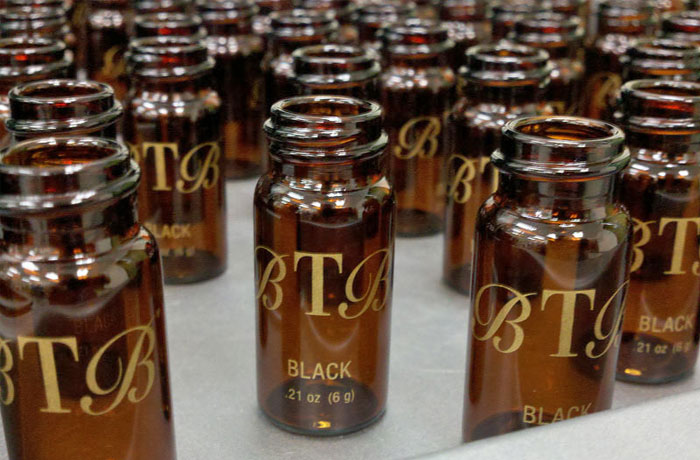Speak to an Expert Today!
714-639-3326
sales@decotechgroup.com
Headquarters
1040 Segovia Circle
Placentia, CA 92870

Traditionally, ceramic enamels are used for screen printing on glass containers called applied ceramic labels (ACL)...
Traditionally, ceramic enamels are used for screen printing on glass containers called applied ceramic labels (ACL). These thermoplastic ceramic enamels become liquid when heated and are screen printed using electrically heated screens. On contact with the surface of a cold glass container, the ceramic enamels solidify immediately, but they have to be fired into the glass in a lehr at a temperature of up to 1,100-1,200 degrees °F. Then, the glass has to be annealed again by slowly cooling it down to room temperature for handling. This process can take several hours and is very expensive not only when considering the cost of energy used, but also in capital investment required for the lehr and the enormous floor space it occupies.
This traditional method of decorating glass containers and tumblers with thermoplastic ceramic enamels has several major disadvantages:
Because of these disadvantages, for years decorators have tried, mostly in vain, to switch to U.V. inks in the decorating process. These organic inks solved the major problems of toxicity, cost, floor space and speed; however, they created a whole new set of problems.
Many U.V. inks required expensive spray pre-treatments with chemicals such as silane. Some needed to be baked after the U.V. cure to achieve any kind of decent adhesion. Some U.V. suppliers even demanded high licensing fees for the privilege of using their inks. Even after all these gimmicks, U.V. inks just didn't stand up to the industry standards for adhesion, abrasion resistance, and product resistance. Because of these unique disadvantages, U.V. inks on glass were primarily a niche market of decorative panels, game machine panels and such.
A new technology has been developed by Isimat called UVitro Technology (patent pending) for glass decoration that uses commercially available organic UV inks. These UV inks produce images with excellent adhesion and eliminate the problems associated with ceramic enamels. There are three major components to this new technology:
U.V. decorating with UVitro technology is practical for bottles, tumblers, perfume bottles and jars. It can also be utilized with acid-etched, sandblasted, spray-coated or electro-static coated containers and tumblers. Poor adhesion has been a problem in many of these segments when using U.V. technologies.
U.V. inks can produce superior graphics on glass containers at a lower cost than other inks and enamels. Print quality enhancements include an unlimited color range including special effects such as gold and silver as well as finer mesh which makes higher resolution graphics possible. Also, half-tone and process color printing produce photo-quality images, and good opacity and brilliant gloss finish are achievable.
Process improvements include:
UVitro screen printing machines can be tailored to various specifications with up to 7 printing stations for bottles and tumblers and high printing precision. Production speed of up to 80 parts/minute are possible: in 2-up operation, 150 parts/minute is achievable.
Press controls enable decorators to adapt to various uneven glass surfaces while curing units are no larger than a shoe box and emit high intensity U.V. light for thorough curing. Heated screens are available on the same machine for printing ceramic enamels when needed.
This paper was presented at DECO 2002 in Arlington by Dave Miller of DECO TECHnology Group, Orange, CA. Isimat is located in Ellwangen, Germany.